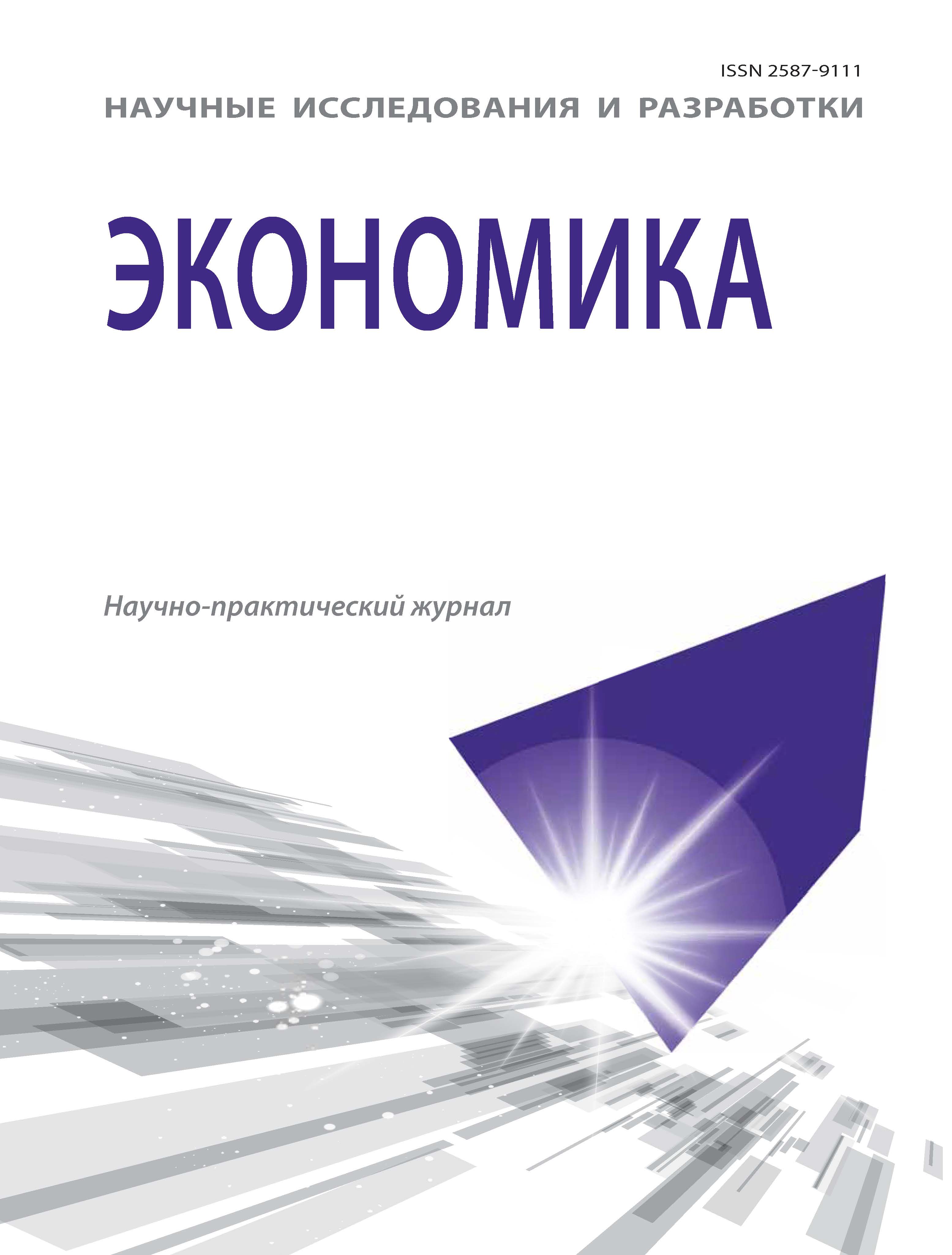Tula, Tula, Russian Federation
Econometric models for earned incomes per Russia’s regions are constructed. Impacts of capital-labor ratio, human capital and innovative technologies on earned incomes are evaluated. Capital-labor ratio is calculated as fixed assets value divided by amount of manpower employed. Human capital is evaluated in terms of average time of training in the education system. Implementation of innovation technologies is assessed in terms of proportion of usable (not wornout) fixed assets value. The models constructed can account for up to 70 per cent of remuneration of labor. The models are constructed based on crosssectional data by regions for the period of 2008–2012. It is found that the effect of capital-labor ratio on remuneration generally diminishes, while it showed temporal increase in 2010. The effect of human capital on remuneration also diminished. Nevertheless, in 2009, in the midst of severe slump human capital did acutely, while temporally, increased its effect on remuneration of labor. The impact of innovative technologies on labor remuneration shows growth, with the exception of 2011, when the impact took plunge. For the period examined the authors identify general trends of diminishing the effects of capital-labor ratio and human capital of manpower employed on the level of labor remuneration. The effect of innovation technologies, on the contrary, increases. The general trend of capital-labor ratio effectiveness diminishing can be reasoned by growing wearing out of fixed assets. Given the high educational level of manpower employed in this country and insufficient level of innovation technologies implementation, the defined trends in shifting the effects of the said drivers can be explained by the known effect of production drivers interplay.
earned income, capital-labor ratio, human capital, innovationtechnologies, econometric models.
Проблеме экономического роста посвящены многочисленные эмпирические исследования, которые проводятся с использованием данных по странам и регионам. Эмпирические исследования факторов экономического роста, как правило, основаны на построении линейных регрессионных моделей, в которые включают человеческий капитал, инновации, политические, социальные и другие переменные. При этом используют перекрестные данные стран, регионов или исследуют временные ряды.
Исследования нередко посвящены оценке влияния человеческого капитала на экономический рост. Эти исследования не всегда подтверждают положительное влияние человеческого капитала. Например, оценивая влияние на экономический рост доли студентов вузов, Барро и Ли пришли к выводу, что влияние этого фактора незначимо, а рост уровня женского образования отрицательно влияет на экономический рост [1]. Исследования Мерфи, Шлейфер и Вишни показали, что доля студентов отдельных гуманитарных специальностей значимо снижает экономический рост [2]. Исследования, проведенные в Судане, показали, что человеческий капитал положительно влияет на экономический рост, но государственные расходы, связанные с обеспечением образования, отрицательно влияют на него [3]. К подобным результатам привели исследования с использованием данных стран ОЭСР [4]. Исследования, проведенные в Южной Корее, позволили получить модели, которые показали эффективность использования человеческого капитала в новых отраслях, но в традиционных отраслях влияние человеческого капитала на производительность оказалось незначительным [5].
1. Barro R., Lee J. Sources of Economic Growth (with comments from Nancy Stokey). Carnegie-Rochester Conference Series on Public Policy. 1994, V. 40, pp. 1-57.
2. Merphy K., Shleifer A., Vishny R. The Allocation of Talent: Implication for Growth. Quarterly Journal of Economics. 1991, V. 106, I. 2, pp. 503-530.
3. Khalafalla Ahmed Mohamed Arabi, Suliman Zakaria Suliman Abdalla. The Impact of Human Capital on Economic Growth: Empirical Evidence from Sudan. Research in World Economy. 2013. V. 4, I. 2, pp. 43-53.
4. Ferdi Kesikoglu, Ozturk Zafer. Relationship between Human Capital and Economic Growth: Panel Causality Analysis for Selected OECD Countries. Journal of Economic and Social Studies. 2013, V. 3, I. 1, pp. 153-162.
5. Young-Joon Kim. Effective Human Capital and Long-run Economic Growt. Korea and the World Economy. 2013, V. 14, I. 3, pp. 475-616.
6. N. Gregory Mankiw. Principles of Economics. Cengage Learning. 2011. 888 p.
7. Campbell R. McConnell, Stanley L. Brue. Economics: Principles, Problems, and Policies. McGraw-Hill, Irwin. 2005. 733 p.
8. Komarova A.S. The role of human capital in increase of labor productivity in Russia. Izvestiya tulskogo gosudarstvennogo universiteta. Ekonomicheskie i yuridicheskie nauki [Izvestia of the Tula state university. Economics and jurisprudence]. 2013. V. 5, I.1, pp. 160-165. (in Russian)
9. Solow R. A Contribution to the Theory of Economic Growth. Quarterly Journal of Economics. 1956, V. 70, pp. 65-94.
10. Kormendi R., Meguire P. Macroeconomic Determinants of Growth: Cross-Country Evidence. Journal of Monetary Economics. 1985. V. 16, I. 2, pp. 141-163.
11. Ramey G., Ramey A. Cross-Country Evidence on the Link Between Volatility and Growth. American Economic Review. 1995. V. 85, I. 5, pp. 1138-1151.
12. Daron Acemoglu, Ufuk Akcigit, Nicholas Bloom, William R. Kerr. Innovation, Reallocation and Growth. NBER Working Paper No. 18993. Issued in April 2013. Available at: http://www.nber.org/papers/w18993.






